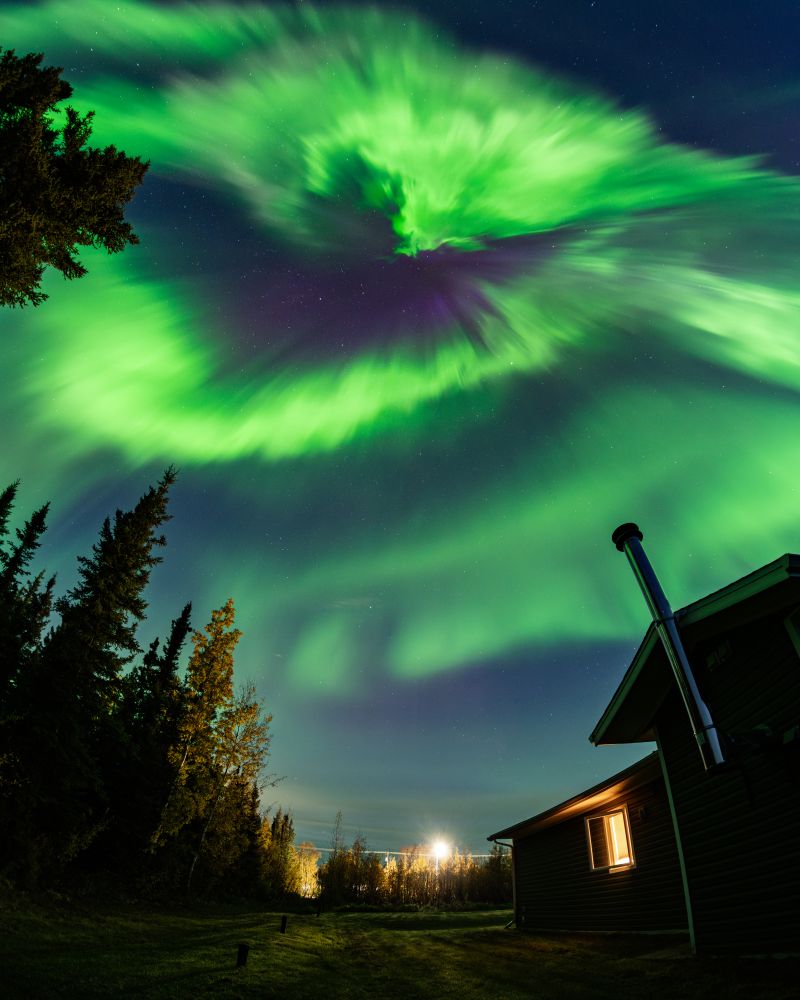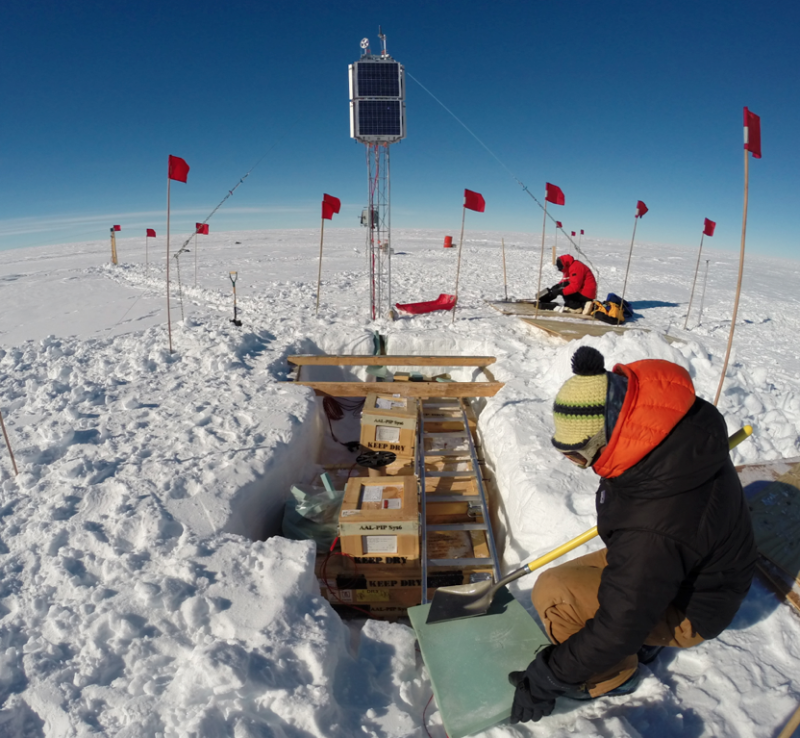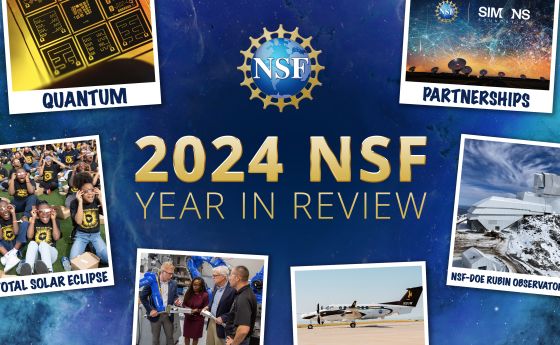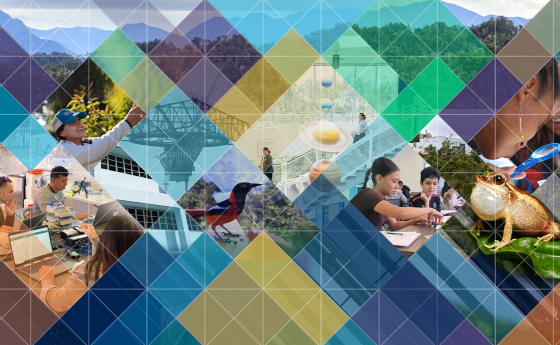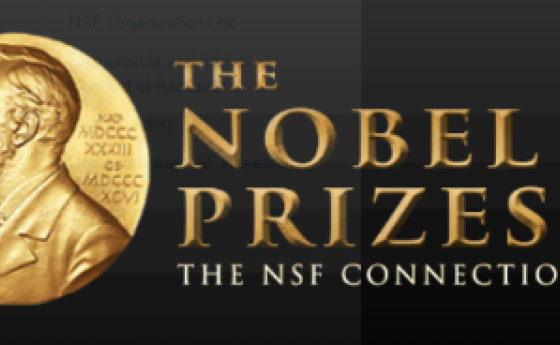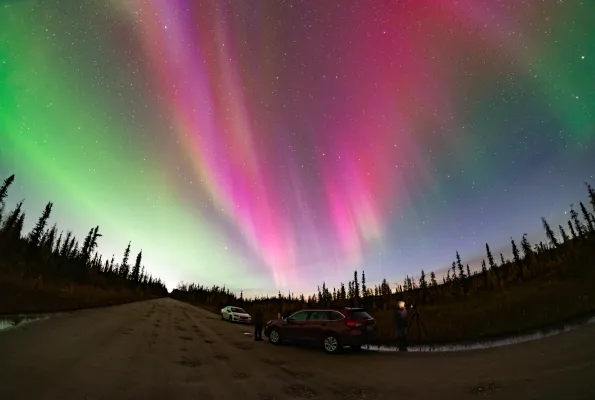
How to catch an aurora
Do you wish you had caught nature's dazzling light shows that the sun provided in 2024? Fear not — U.S. National Science Foundation-supported researchers are closely monitoring the sun's activity to help us understand auroras and even predict when and where these ephemeral displays will occur.
As auroras lit up the night sky as far south as Virginia these past few months, people have seen colorful evidence of the sun's outbursts during the most active part of its natural cycle — the solar maximum. During this period, the sun can release extraordinary explosions of light, energy, plasma and charged particles, spurring space weather phenomena like geomagnetic storms that create dazzling auroras. However, these geomagnetic storms can also impact satellites, radio and GPS signals, affect power grids and pose a threat to astronauts in orbit.
NSF supports projects that use specialized instruments located around the world to monitor the sun's activity and its potential effects on Earth and in space. Below, we'll answer some burning questions about auroras and space weather.
What is an aurora?
An aurora is a glowing light show in the Earth's upper atmosphere, occurring at altitudes between about 85 and 600 km.
These stunning displays begin when the sun's charged particles reach the Earth's magnetic field, or magnetosphere. The particles travel on the streaming solar wind or as bursts during coronal mass ejections, which are often linked with solar flares.
As the solar wind travels through space, it interacts with the magnetosphere and collides with gases in the upper atmosphere, like oxygen and nitrogen. The energy released during these collisions creates the colorful lights we recognize as auroras.
The colors of an aurora depend on the type of gas, energy release and altitude of the collision. Oxygen collisions at lower altitudes (85-150 km) produce green lights, while higher altitude collisions (around 250-350 km) create red lights. Nitrogen produces purple and blue hues across various altitudes.
Auroras normally occur near the polar regions in both hemispheres. In the Northern Hemisphere, they are called aurora borealis (northern lights), while in the South Hemisphere, they are known as aurora australis (southern lights). "Auroras are a visual manifestation of the role the magnetosphere plays in protecting us, capturing and redistributing energy from the sun," said Brian Harding, a researcher at the University of California, Berkeley, leading an NSF-supported project observing auroral impacts on the upper atmosphere.
Why are we seeing the 'northern lights' in southern states?
In 2024, auroras appeared as far south as the state of Virginia because the sun is exceptionally active during the current solar maximum cycle.
Although auroras are visible outside of the solar maximum cycle, we're more likely to see them during this phase. Under normal conditions, auroras are typically visible only at high latitudes near the Arctic and Antarctic regions due to Earth's magnetic field configurations. However, during a powerful geomagnetic storm, like those in May and October 2024, a combination of factors causes the auroral oval to dramatically expand, making the lights visible in regions much farther toward lower latitudes than usual.
The NSF-supported Midlatitude Allsky-imaging Network for GeoSpace Observations (MANGO) monitors windspeed and temperatures in the upper atmosphere. The instruments recorded almost supersonic wind speeds up to 600 meters per second over the U.S. and record-breaking temperatures of 2,200 Kelvin (3,500 Fahrenheit) during the May 2024 aurora event.
Although NSF-supported networks like MANGO and the Super Dual Auroral Radar Network (SuperDARN), have been monitoring geomagnetic storms for decades, the superstorm in May helped scientists more closely study what happens to Earth as it dissipates the hundreds of gigawatts of energy from the solar wind.
Can we predict auroras?
Researchers can forecast auroras on different timescales, from years to minutes.
The solar cycle lasts approximately 11 years, so during the four to five years near solar maximum, there is going to be more potential for auroras. However, although scientists know that the sun has reached the solar maximum period, they cannot pinpoint when the exact peak will occur, since that peak only becomes evident after they see a consistent decline in solar activity. Experts expect the maximum period to continue for another year before the activity declines and the sun transitions to a solar minimum period.
They can also forecast auroras based on solar rotations, which last 27 days. So, if there was an aurora 27 days ago, there's a decent chance you'll catch another one within a few days.
Sometimes, researchers can predict auroras one to three days in advance by detecting solar coronal holes on the sun and coronal mass ejections erupting from its atmosphere. They can also use satellites to measure the solar wind about 15-to-45-minutes before it hits Earth.
How do we monitor space weather?
With a lot of instruments.
Not only does MANGO track windspeeds and temperatures, but it also monitors airglow, the natural light that appears around Earth, and gravity waves, which are meteorological phenomena like low-frequency sound waves that travel up from the lower to the upper atmosphere.
Although scientists know the sun causes most space weather, they are also investigating how much gravity waves contribute. "MANGO contains instruments that work together to determine properties of these gravity waves, allowing us to better understand the lower atmosphere's role in driving space weather," said Harding.
In addition to supporting MANGO and SuperDARN, NSF also supports magnetometer chains, or lines of magnetometers that can detect changes in Earth's magnetic field, in polar regions.
"The NSF has provided continued support that has allowed us to capture data over an entire solar cycle," said Zhonghua Xu, a professor at Virginia Tech leading an NSF-supported project studying geomagnetic activity in polar regions. "The Antarctic chain, along with its counterpart in West Greenland, provides invaluable observations by enabling simultaneous monitoring of geospace dynamics across the northern and southern polar regions."
The chains provide long-term data that shed light on auroral activity and energy transfer between hemispheres, which helps us model and predict space weather on a global scale to protect our communication systems, power grids and satellites.
The Antarctic magnetometer chain captured uninterrupted, simultaneous observations of the October and May 2024 super magnetic storm's impacts across both hemispheres. "The event was a unique opportunity to investigate how strong solar activity drives geomagnetic disturbances, affects polar regions and influences Earth's geospace environment," said Xu.
How can I get involved?
Through citizen science!
NSF provided initial funding for Aurorasaurus, which allows people around the world to track and share their aurora sightings. Scientists and educators from the New Mexico Consortium and NASA lead the effort.
When you visit the Aurorasaurus website, you can see where an aurora is happening in real time, let other Aurorasaurus visitors know of an aurora's existence and receive "early warnings" when an aurora is likely to happen nearby.

